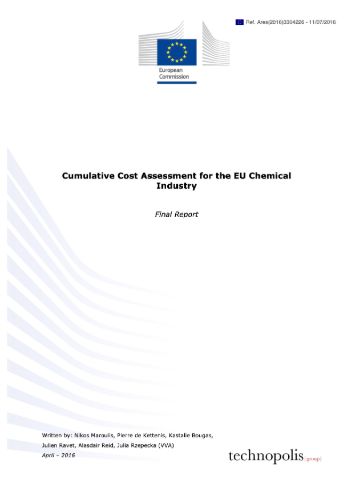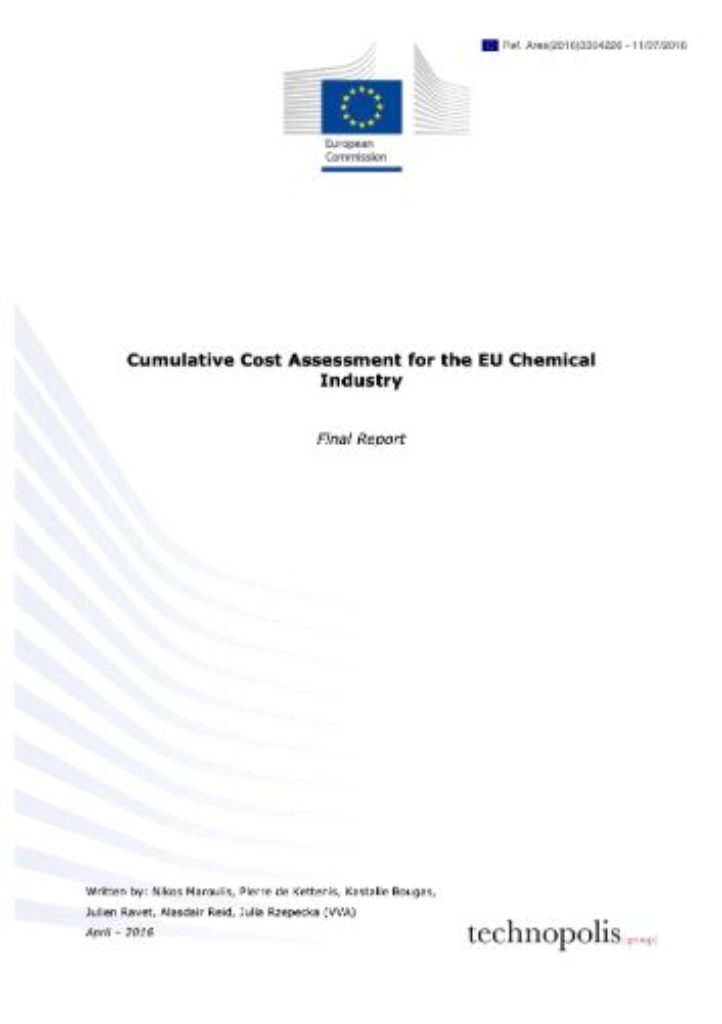Cumulative Cost Assessment for the EU Chemical Industry
Erscheinungsdatum: 8 Februar 2017 | Sprache der Studie: EN
The aim of this study is to analyse the cumulative costs of the most relevant EU legislation with a bearing on the chemical industry in the 28 EU Member States during the period 2004-2014. Specifically, the study objectives are to:
- provide for quantification of the cumulative costs related to those packages of EU legislation with the highest cost impact, and quantify the cumulative costs in the subsectors of the chemical industry
- demonstrate how the costs have changed over time
- compare the costs with relevant financial indicators for the chemical industry.
The study covers the whole chemical sector, although cost is assessed only for the subsectors for which the available data are sufficient to produce reliable estimations. These are, according to the statistical classification of economic activities in the European Community (NACE): 20.13 — inorganic basic chemicals; 20.14 — organic basic chemicals; 20.16 — plastics in primary forms; 20.20 — pesticides and agrochemical products; 20.41 — soaps and detergents, and cleaning and polishing preparations; 20.30 — paints, varnishes and similar coatings and 20.59 — other chemicals products. Among the pieces of legislation affecting the EU chemical industry, only those incurring high cost directly to chemical companies are included. Legislation that affects upstream non-chemical companies, which then pass on costs to the chemical industry through the prices of inputs, is not within the scope of the study. Similarly, indirect costs — such as opportunity cost due to forgone business or transaction cost and costs related to national legislation exceeding EU requirements — are not taken into account.


